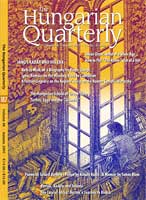The Kádár Regime and the Roman Catholic Hierarchy
The Kádár Regime and the Roman Catholic Hierarchy
Author(s): Krisztián UngvárySubject(s): History
Published by: Society of the Hungarian Quarterly
Summary/Abstract: Warding off clerical reaction” was arguably the most contradictory aspect of repression under the Kádár regime. From the crushing of the 1956 Revolution until the end of the Sixties, dozens of proceedings against Church figures were initiated that resulted in heavy prison sentences; from the beginning of the Seventies, by contrast, this was the sole area in which overt state security intervention (i.e. conspicuous house searches or legal proceedings) almost never took place. All religious denominations were persecuted, with the security service even paying special attention to sects such as the Hare Krishna movement. The biggest successes, however, were achieved in the case of the major historical denominations, as a result of which the Reformed Church (the Calvinists), the Lutherans, the Jewish community and the Roman Catholic Church lost virtually all the independence they had previously enjoyed. Many authors have already looked at relations between the Catholic Church and the party state in Hungary.1 None, however, have been in a position to assess systematically the security services archives. In what follows, relations between the Church and the state will be examined purely in terms of contacts with the State Security Services.
Journal: The Hungarian Quarterly
- Issue Year: 2007
- Issue No: 187
- Page Range: 80-91
- Page Count: 12
- Language: English

